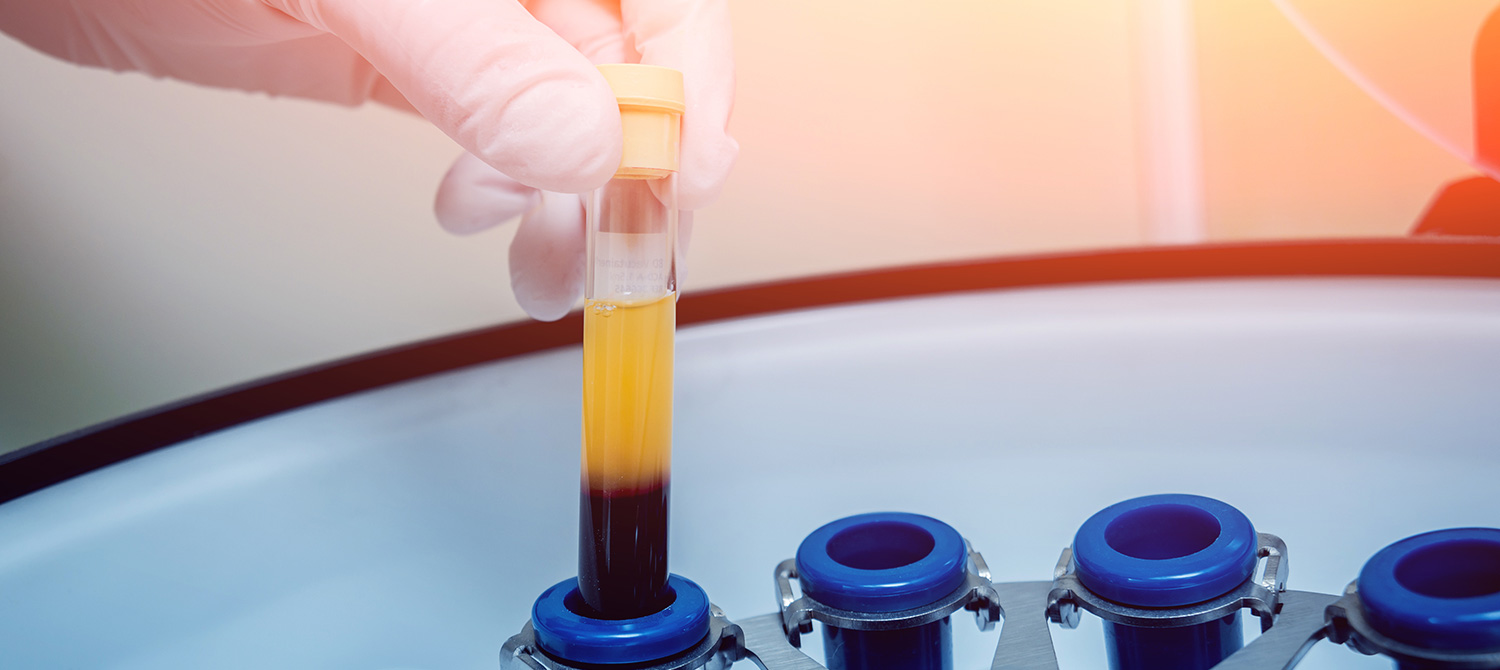Endometrial/Ovarian PRP

Platelet-rich plasma (PRP) infusion in the endometrium and/or ovaries is a minimally to none-invasive technique that has shown very promising results, rejuvenating the female reproductive tract and improving reproductive outcomes. At the same time, it is a safe technique with minimal side effects and involves no administration of medication.
PRP is an autologous blood product, meaning that it is produced via processing a sample of the patient’s own peripheral blood. The product of this specialized process contains a high concentration of platelets, along with various growth factors, proteins that control cell growth. The overall effect of PRP infusion is the local stimulation of tissue regeneration and cell proliferation. This has been utilized in various other Medical Specialties, most notably Dermatology (healing of injury, burns, ulcers etc) and Orthopaedics (arthroplasty, tendonitis etc), as well as in Cosmetology (male pattern baldness treatment etc). PRP has also been thoroughly studied and utilized for many years in Reproductive Medicine with very encouraging results, particularly for cases with recurrent implantation failure and/or pregnancy loss.
The only ingredient necessary for the production of PRP is some peripheral blood, collected by simple blood sampling. The collected sample is placed in specially designed vials and is subsequently subjected to a high-speed centrifugation protocol in a specialized centrifuge. This process separates blood into its different components based on their density. The red blood cells stick to the bottom of the test tube and the platelets and plasma form a yellowish layer on top. The plasma is then collected and undergoes quality control, to ensure that the platelets and growth factors are in high enough concentrations to exert a therapeutic effect. Once this condition has been cleared, the resulting PRP solution is applied accordingly.

For endometrial PRP, 0.5-1 mL of PRP is infused into the endometrial cavity via an embryo transfer catheter. This process is quick, painless, requires no anaesthesia and can be performed within the clinic.
For ovarian PRP, a solution is infused into the ovary, either via the transvaginal or the laparoscopic route. The transvaginal route is similar to the egg retrieval process but instead of follicular fluid aspiration, the needle infuses the PRP solution into the ovarian stroma. Alternatively, this procedure is performed laparoscopically, meaning that the ovary is approached trans-abdominally. Laparoscopy is a minimally invasive procedure, with negligible scarring that also confers the benefit of diagnostic assessment of the female reproductive system and peritoneal cavity with unmatched accuracy (gold standard technique) and may be recommended during initial female fertility assessment. Additionally, laparoscopy facilitates the “see and treat” approach, meaning diagnosis and treatment in the same procedure for several fertility-impairing conditions, most notably endometriosis and adhesions.
PRP infusion is a minimally invasive process with negligible adverse effects that entails no additional medication. Therefore, it could be offered as an accessory treatment to every woman, however, research has shown that it is most effective in the following patient categories:
Endometrial PRP
- Women with multiple implantation failures (≥3), with high quality embryos.
- Women with thin endometrium (<7mm) during embryo-transfer preparation protocol.
- Endometrial adhesions (Asherman’s Syndrome) or atrophic endometrium.
Ovarian PRP
- Women of advanced age entering menopause or perimenopause.
- Women of advanced reproductive age (>35 years) with low AMH levels and diminished ovarian reserve.
- Younger women with premature ovarian insufficiency.
Benefits of PRP
Endometrial PRP
Ovarian PRP
Rejuvenate your Fertility
Evidence-based positive impact on reproductive outcomes with minimal side effects and without any medication. Help your body help itself!
